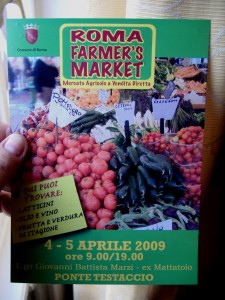A couple of papers just out look at the use of plants as medicines, for both humans and livestock, in Africa. Mongabay reports on a study documenting how sacredness of trees and forests, protection of plants at burial sites, selective harvesting, secrecy and other beliefs and practices contribute to the protection of medicinal plants in Tanzania. Meanwhile, researchers at Kansas State University have put together a bibliographic database of plants used to treat complaints of livestock and pets in southern Africa: 506 herbal remedies are being used in 18 study areas against 81 symptoms. Amazingly, these data come from only 21 papers. A wide-open field, that of ethnoveterinary botany, clearly.
Spring is in the air…
…and a young man’s thoughts naturally turn to gardens. Honduran gardens and their role in health. Cuban organic gardens. And via them, Around the World in 80 Gardens, a BBC documentary series that looks like it might be worth getting on DVD. And, finally, let us not forget Kew Gardens, 250 years old this year.
LATER: And there’s also an extensive discussion of the role of homegardens in providing nutrition for people living with HIV at the Solution Exchange for the Food and Nutrition Security Community in India. Thanks, Arwen.
LATER STILL: LEISA rounds up evidence of the worldwide gardening craze.
A dangerous business
Farmers are finding themselves in the front lines. In Gaza. And on the southern island of Sulu in the Philippines. And no doubt elsewhere around the world. The problems in Sulu also affect the nearby Zamboanga peninsula, home of one of the major coconut genebanks of the world, at the Philippines Coconut Authority‘s Zamboanga Research Centre.
Nouvelle cuisine
Idaho’s Treasure Valley Farmer-Chef Collaborative sounds like a really cool idea. It brings producers — including producers of some fairly unusual things for Idaho — together with the area’s top restaurateurs. The former get a lucrative market, the latter some interesting new ingredients with which to attract customers. Everybody wins. And speaking of interesting new ingredients, how about goat meat? Apparently, New Yorkers have just discovered it. Fuggedaboutit.
Mercato di coltivatori
Interesting to see the term “farmer’s market” — in English — being used in Italy, and not particularly for the benefit of tourists. Not sure how long it’s been in currency. I guess the concept has been around for a while.
